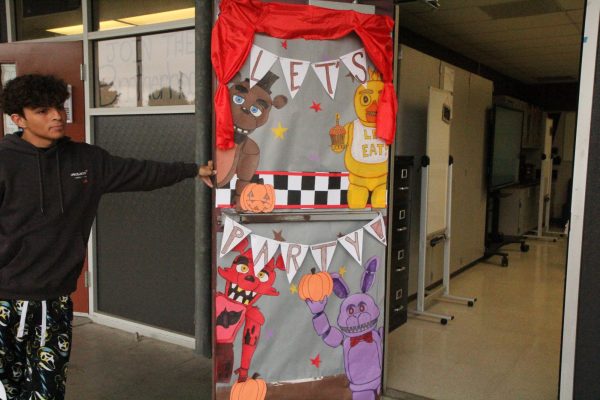Juniors subject to series of tests
“It just seems like too much.”
This is response heard over and over again when juniors, teachers, and administrators alike were asked how they feel about the overload of tests juniors have been taking this spring in such a short period of time.
When asked the same question, almost every student in Stewart Jacoby’s second period U.S. History class raised their hand and groaned, indicating how stressed they are with the amount of tests they’ve been taking.
Tests include the California Standards Test, the Early Admission Program, Common Core, and Measures of Academic Progress. For some, Advanced Placement tests are just around the corner as well. All of these are in the fourth quarter, leaving little time for curriculum.
“I just feel like it’s way too many tests at one time, really stressful, and extremely chaotic,” junior Brandon Alford says, “It’s like 20 days of school (left) with 15 days of tests.”
Among their frustration and stress is some confusion regarding exactly why they are taking all these tests, what the purpose is, and why the burden is set on the juniors. Some are even taking three tests in one day, without any explanation.
“It’s too much for juniors,” Eric Andrade, junior, said. “It’s hard enough preparing for the SAT and AP tests as a junior, and even harder with these unnecessary computerized tests.”
But what’s the reason behind this short time frame packed with several tests for only juniors?
Assistant Principal Gamal Salama, who organizes and is in charge of the tests, agrees with students that this short period is packed to the brim with tests. He explains that the decision regarding what grade takes the tests lies between the state and the district, not school administration.
With Common Core launching next year, this year is being treated as a test run, and juniors have been selected to take the field tests.
“With anything new, they have to do a trial to test out the bugs,” says English teacher Alice Henderson. “It’s the same thing with Common Core.”
She added that validity and reliability are key components that tests need to have, and these field tests are to ensure that the testing material is the right balance of skill level. “They take all the information from the tests and plot it to look for things out of the normal progress.”
So if the results show that mostly everyone is struggling on a certain section, then the test developers know that the material is too hard or a mistake was made. Or if everyone scores high then they know that the material may be too easy. The field tests help developers know how and where to balance it.
Junior Monica Kunz expresses her frustration, saying it’s harder to study for all of the tests at the same time in just one month. She also is confused as to why only the juniors are taking these tests. “They could’ve just gave us the EAP instead of both the EAP and CST.” However, students need to take both because questions on the EAP test are embedded in the CST tests.
With a sigh, English teacher Victoria Marinelli shares that her juniors are “overtested” right now. “I felt it could’ve been handled better,” she said. “We learned in order to take (the EAP), they had to take the CST.”
Both Marinelli and Henderson agree that these tests should be planned ahead in order to space them out more efficiently next year.
Henderson set the MAP testing as a final for her juniors to relieve them of one more test they would have to take. “Testing is my least favorite thing to do,” she admits. “As a teacher it’s boring.” However, she knows that it’s something required to show “strengths and challenges” that students have.






